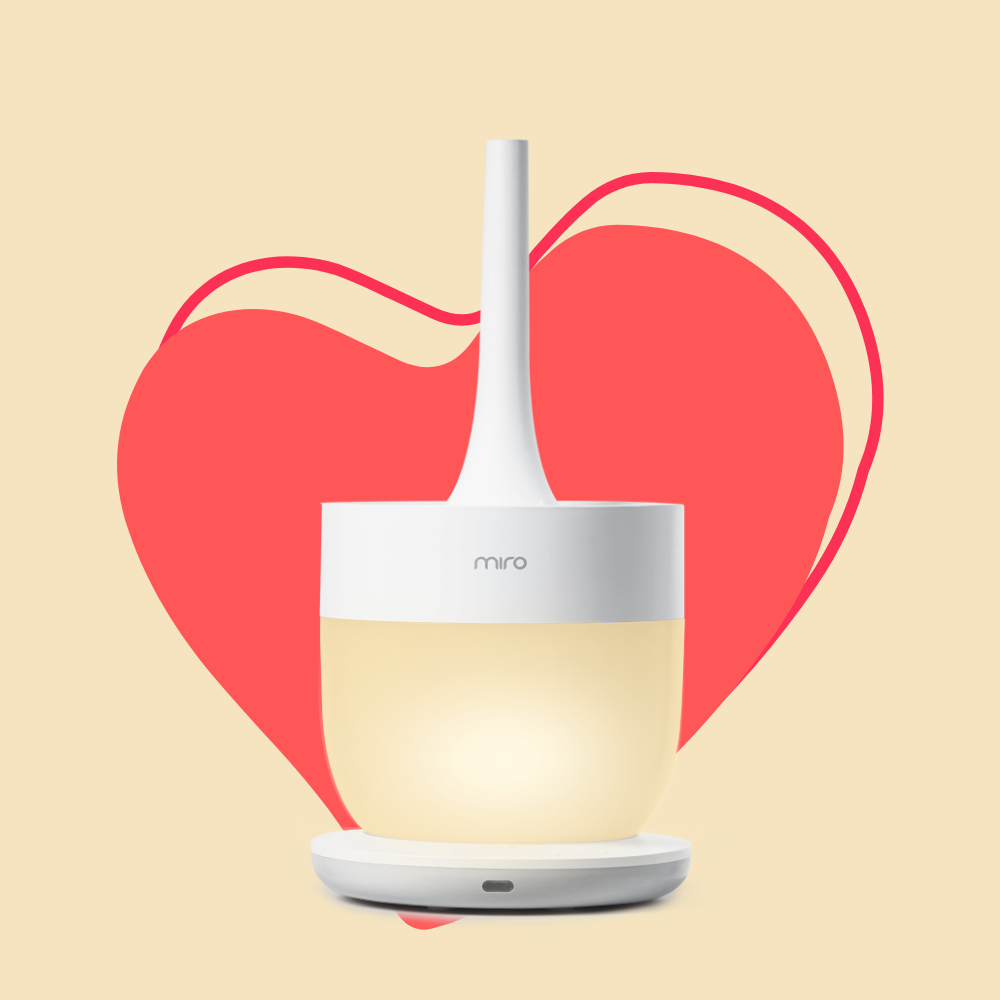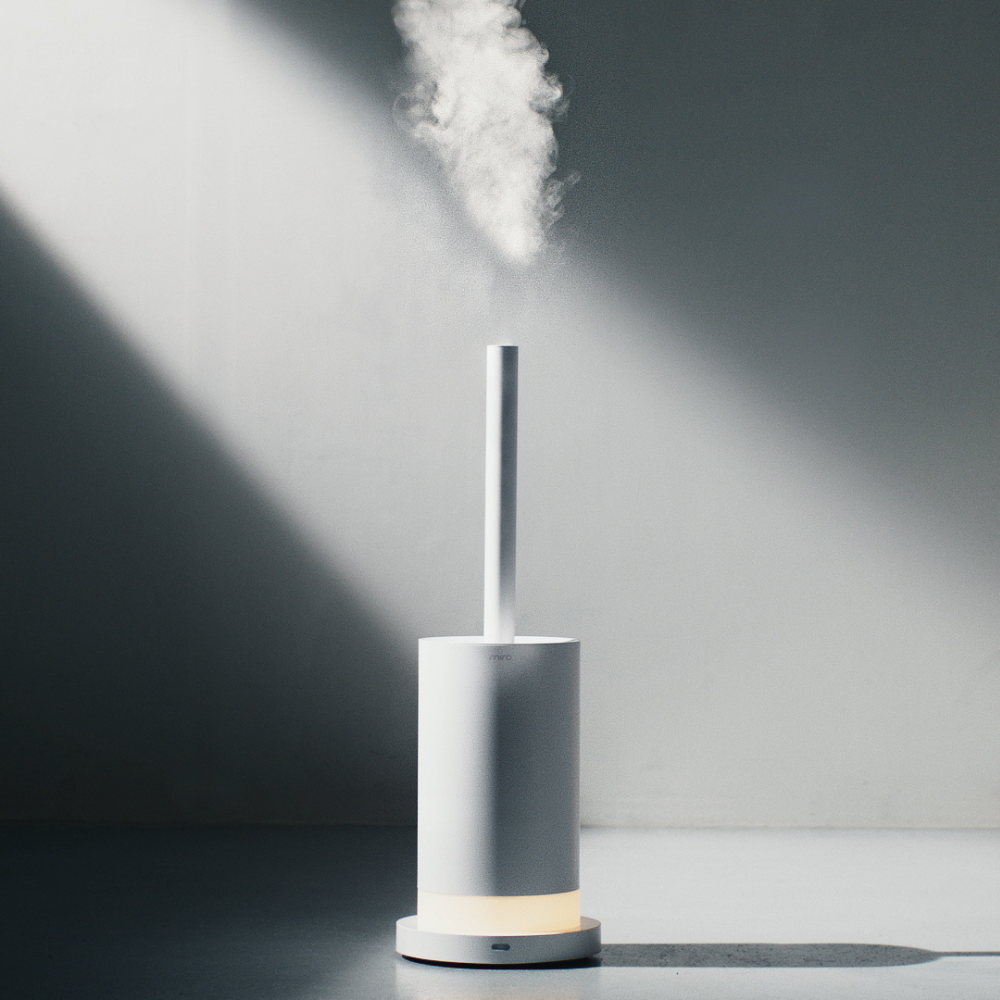

How to Use a Humidifier for Plants? A Comprehensive Guide
Are you a proud plant parent striving to cultivate an indoor jungle teeming with lush, vibrant houseplants?
Do you dream of tropical orchids, majestic Monsteras, and elegant ferns thriving in your living room? If so, you know that achieving this vision takes more than just regular watering and appropriate lighting.
One factor that often gets overlooked in indoor plant care is the humidity level. That's where a secret weapon comes in – the humble humidifier.
In this guide, we'll go through how to use humidifiers for plants, why you need a humidifier, what plants need extra humidity, and how to choose the best humidifier for plants.
Perfecting the Art of Using Humidifiers for Plants
1. Mastering the Placement of Your Humidifier
The positioning of your humidifier plays a critical role in its effectiveness. As you probably know, water vapor is the active agent from your humidifier, nourishing your plants by providing the moisture they need.
But for it to work optimally, the placement must be strategic. Too close, and you risk creating an overly moist environment that can encourage the growth of fungus, cause root rot or make leaves soggy, damaging your plant’s overall health.
Too far away, and the plant might not benefit from the additional humidity at all, as water vapor might not reach the plant or dissipate in the air before it does.
Thus, finding the right spot is crucial. Consider placing the humidifier where it can evenly distribute humidity across your plants.
The best position would usually be at a considerable distance from your plants, possibly in the center of your plant collection, for even distribution of moisture.
2. Achieving the Goldilocks Zone of Humidity
Humidity is a critical factor when it comes to plant growth, but it is not a one-size-fits-all situation. Different plants have different humidity requirements based on their natural habitats and physiological structure.
Many indoor plants come from tropical or subtropical environments, where humidity levels are relatively high. These plants, when brought into a typical indoor setting, might suffer due to lower humidity levels.
Therefore, maintaining an environment with around 40% to 60% relative humidity often proves beneficial for most houseplants. To ensure that you hit this sweet spot, consider using a hygrometer, an easy-to-use tool that measures the amount of humidity in the air.
By monitoring the humidity levels, you can adjust your humidifier's output accordingly and provide your plants with the ideal growing conditions they crave.
3. Decoding the Timing: When Should You Run Your Humidifier?
The timing of using your humidifier can significantly impact its effectiveness.
It may seem surprising, but the time of day, the season, and even the specific needs of your plants all play a role in determining the best time to turn your humidifier on and off. For instance, during the winter months, the indoor air can become very dry due to heating systems.
These systems remove moisture from the air, making it hard for humidity-loving plants to thrive. In such situations, your plants will need additional humidity, making it an ideal time to use your humidifier. Conversely, during the summer months, especially in humid regions, you might not need to use the humidifier at all.
On a daily scale, running the humidifier during the early morning and late evening, when the temperature is generally lower, can be more beneficial.
During these times, the stomata (tiny pores on plant leaves) are more likely to be open for respiration, allowing your plants to make the most of the increased humidity.
The specific requirements can vary, though, depending on the plant species and its natural rhythm. Some plants might need more humidity during the day, others at night.
Thus, it's always good to know your plants well and adjust your humidifier usage accordingly.
Why Do You Need a Humidifier for Your Plants?
1. Somer Plants Have a Weak Root Systems
The roots of your plants are their lifeline. They draw up water and nutrients from the soil, which then get transported to different parts of the plant.
However, some houseplants have less robust or smaller root systems, often due to the adaptations they've made for survival in their natural habitats. For instance, epiphytic plants like orchids and bromeliads, which grow on other plants in the wild, often have smaller root systems.
These plants have evolved to absorb moisture and nutrients from the air through their leaves and roots. In an indoor setting, especially during dryer periods, a humidifier can supplement their moisture needs by increasing the humidity levels in the air, allowing the plant to draw the water it needs from the air around it.
2. Thin-Leafed Plants Can't Store Water
Not all leaves are created equal. Some plants have thick, fleshy leaves that can store water (think succulents), while others have thin, delicate leaves that can dry out quickly.
Thin leaves have a larger surface area relative to their volume, which increases the rate of water loss from the plant. Moreover, they lack the protective waxy layer or hair-like structures that some other plants have to reduce water loss.
As a result, they can lose water quickly in dry conditions, leading to problems like brown leaf tips or even premature leaf drop. By maintaining a high level of humidity, a humidifier helps these plants conserve water, supporting their overall health and well-being.
3. Indoor Environment Can Be Too Dry
Most indoor environments are subject to controlled temperatures and air circulation, especially those with heating or cooling systems.
These systems, while making our lives comfortable, often strip the air of its natural humidity. This can be a challenge for houseplants, particularly those that come from naturally humid environments.
A humidifier helps bridge this gap by replicating the moist conditions these plants are accustomed to, making your home a more plant-friendly environment.
3. Misting and Pebble Trays Aren't Enough
While misting and using pebble trays are commonly recommended strategies to increase humidity for plants, they often don't suffice.
Misting only provides a temporary boost in humidity and needs to be done multiple times a day to maintain a high humidity level. Moreover, it can lead to leaf spotting or fungal issues in some plants.
On the other hand, pebble trays offer a more constant source of humidity but have a limited range, usually benefiting only the plants placed directly above or adjacent to them.
For tropical plants that need high humidity levels or larger collections of humidity-loving plants, a humidifier can provide a more consistent and substantial source of humidity.
What Plants Need a Humidifier?
While many plants benefit from increased humidity, some are particularly fond of humid environments.
These are typically plants native to tropical or subtropical regions where humidity levels are naturally high. Ferns, for instance, love high humidity and can thrive beautifully when a humidifier is used.
Similarly, other tropical favorites like orchids, prayer plants, and Philodendrons can benefit greatly from increased humidity.
Moreover, plants with large or thin leaves, like Monsteras and Calatheas, can also benefit from a humidifier, as it can prevent the leaf tips from browning, a common problem seen in dry conditions.
The Benefits of Using a Humidifier for Your Plants
The usage of a humidifier goes beyond just meeting the basic needs of your humidity-loving plants. By maintaining optimal humidity levels, humidifiers can promote lush, vibrant growth, and reduce the likelihood of common plant issues associated with dry conditions.
For instance, brown leaf tips, a common sign of inadequate humidity, can be prevented. The increased moisture can also discourage spider mites, pests that thrive in dry conditions and can cause significant damage to your plants.
In addition, by using a humidifier, you create a more stable and consistent environment for your plants, which can lead to less plant stress and, consequently, healthier and happier plants.
And it's not just your plants that benefit. Increased humidity can also make indoor environments more comfortable for humans, particularly in dry winter months, leading to a win-win situation.
How to Choose the Best Humidifier for Your Plants
1. Understanding the Different Types of Humidifiers
- Ultrasonic Humidifiers: These devices work by using high-frequency sound vibrations to produce a cool mist. Ultrasonic humidifiers are generally silent in operation and can provide a consistent source of humidity without the risk of increasing the room temperature. They're particularly suitable for larger spaces or rooms with multiple plants.
- Evaporative Humidifiers: These humidifiers use a fan to evaporate water from a wick filter. This evaporation process naturally cools the air, making these humidifiers an excellent choice for warmer climates or during summer months. However, the fan can make these humidifiers slightly noisier than other types.
- Vaporizers (Steam Humidifiers): These humidifiers work by heating water to create steam, which then cools before leaving the machine. They can humidify a room quickly and are usually more energy-efficient than other types. However, they can also increase the room temperature, so they're more suitable for cooler climates or during winter months.
2. Room Size and Humidifier Capacity
The size of your room and the number of plants you have will determine the capacity of the humidifier you need. Small desktop humidifiers might be sufficient for a small number of plants or a small room.
However, for larger rooms or larger plant collections, a room humidifier with a larger water tank will be necessary to ensure that the humidifier can run for longer periods without needing to be refilled.
3. Noise Level
Humidifiers, like any other machine, generate noise during operation. While some people find the white noise produced by humidifiers comforting, others might find it disturbing, especially in quiet spaces or during the night.
Ultrasonic humidifiers are usually the quietest, while evaporative humidifiers can be noisier due to the fan. Therefore, consider the noise level that you're comfortable with when selecting your humidifier.
4. Maintenance Needs
Humidifiers need regular cleaning to prevent the growth of mold and bacteria, which can be harmful to both plants and humans.
Some humidifiers come with dishwasher-safe parts or easy-to-clean designs, making the cleaning process easier. Besides, consider how easy it is to refill the water tank, as you'll need to do this regularly.
5. Design Considerations
While the functional aspects should be your primary concern, you might also want to consider the humidifier's design, especially if it will be placed in a visible location.
Some humidifiers come with a sleek, modern design that can complement your interior décor and enhance the aesthetic appeal of your space.
FAQs
Can a humidifier harm my plants?
A: While humidifiers are generally beneficial for plants, overdoing it can cause problems. Excessive humidity can lead to waterlogged soil and promote the growth of mold or fungus.
Signs of over-humidification include condensation on leaves, mold on plant surfaces, or a musty smell. If you notice these signs, consider reducing the humidifier's output or increasing ventilation in the room.
How often should I clean my humidifier?
A: To prevent mold and bacteria from proliferating, it's recommended to clean your humidifier at least once a week.
If you're using tap water, you might need to clean it more often due to mineral buildup.
Can all plants benefit from a humidifier?
Not all plants require high humidity. Plants that come from desert or Mediterranean climates, such as succulents, lavender, and rosemary, prefer drier conditions.
Always research your specific plant's needs to provide the best care.
Conclusion
Using a humidifier can be a powerful tool in your plant care arsenal. By providing the added humidity that many houseplants crave, you can enhance their growth and vitality, all while creating a greener, more lush indoor environment.
A humidifier isn't just a simple machine; it's a bridge that helps your houseplants thrive in their adopted home. So, embrace the wonders of the humidifier and let your indoor jungle thrive!


